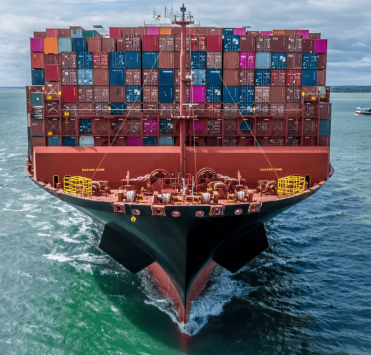Seaports: Odessa, Gdansk or Constanta?

In 2024, container shipping to Ukraine remains one of the priority areas in international logistics and sea freight transport. Changes in the geopolitical situation and increased risks in the Black Sea region pose a question to companies and entrepreneurs: which port to choose for container shipping from Europe and other regions of the world?
This article will help to understand the possibilities and limitations of ports in Ukraine, Romania and Poland, as well as give an overview of the cost and time of delivery to Ukraine. We will consider the port of Constanta (Romania), the port of Gdansk and other major ports in Poland, as well as Ukrainian ports (Odessa, Chernomorsk).
Geographical proximity and key seaports
Romania
- Port of Constanţa (Port of Constanţa)
- The largest deep-water junction on the Black Sea coast.
- It can accommodate large class ships (Panamax and Post-Panamax), which simplifies the delivery of containers to Ukraine from Asia and the Middle East.
- Thanks to the extensive railway network and convenient road routes, this port is widely used for logistics to Ukraine and transit of goods across Europe.
Poland
- Port Gdańsk
- Poland's largest seaport on the Baltic Sea.
- It has a modern container terminal (DCT Gdańsk) and direct services from Asia to optimize sea freight traffic.
- It is well connected to the European transport network: railways and motorways allow the delivery of goods to Central and Eastern Europe, including Ukraine.
- Port Gdynia (Port Gdynia)
- Located next to Gdansk; smaller infrastructure but high-tech transhipment facilities.
- Could be an alternative during peak periods of Gdansk utilization.
Ukraine
- Odessa Sea Port (Odesa Sea Port)
- The Port of Odessa is historically the largest commercial seaport in Ukraine, located on the shores of the Black Sea. It has always played a major role in the development of foreign economic relations of the country due to its favourable geographical position and proximity to the main transport routes. Before the war, the port of Odessa was one of the main centres of maritime logistics, including container transportations, transshipment of liquid and dry cargoes.
- Port Chornomorsk (Chornomorsk)
- The Port of Chornomorsk is located south of Odessa and is considered one of the most versatile ports in the Black Sea-Azov basin. It specialises in container traffic, ferry traffic (road and rail) and handling of various types of dry and liquid cargo. It has a modern container terminal, which before the outbreak of hostilities received and dispatched hundreds of thousands of TEUs annually. High-performance cranes and a developed service infrastructure allow for fast container handling and reduce vessel idle time in the port.
- Yuzhny Port (Pivdennyi, formerly Yuzhny)
- It is located near Odessa and Chernomorsk.
- Deep-water berths (up to 15 m) allow handling large tonnage vessels.
It is important to bear in mind that the operation of Ukrainian ports may be restricted for security reasons. Before planning logistics, it is important to check the current situation with shipping lines and freight forwarders.
Infrastructure and container handling facilities
Romania: Port of Constanta
- Deep water berths up to 19 metres.
- Modern transshipment equipment, specialized container terminals, warehousing facilities.
- Convenient connection with railway and motorways, which simplifies logistics to Ukraine.
Poland: Gdansk, Gdynia
- Gdansk (DCT Gdańsk): Poland's largest container terminal, operating with ocean services from Asia via the Suez Canal.
- Gdynia: several container terminals, slightly lower transhipment volume but flexible schedules.
Ukraine: Odessa, Chernomorsk, Yuzhny
- Depths of berths from 11 to 15 metres; availability of modern transshipment complexes and terminals for delivery of containers to Ukraine.
- Port Odessa: historically the most universal, with a large warehouse infrastructure.
- Port Chernomorsk: specializes in container shipping and ferry crossings.
- Port Yuzhny: one of the deepest and most promising ports in the country.
Cost of maritime transport and additional costs
Tariffs for the maritime part
- Constanta: due to high competition and deep water, the port often offers competitive rates, especially if direct ship calls to Ukraine are limited.
- Gdansk: due to direct services from Asia, the cost can be moderate but sometimes more expensive than in Constanta. This is influenced by the number of shipping lines, seasonality and global freight market trends.
- Ukrainian ports (Odessa, Chernomorsk, Yuzhny): traditionally had low port charges and direct ship calls. However, increased military risks may affect insurance costs and vessel availability.
Sea freight rates directly depend on the seasonality of cargo flows and availability of free equipment at shipping lines. The cost of shipping by sea can change every week and vary significantly depending on the port of destination, be it Odessa, Chernomorsk, Constanta or Gdansk. In order to optimize sea freight and avoid overpayments, it is recommended to regularly check the latest sea freight prices with logistics providers, taking into account seasonal fluctuations and changes in global cargo flows.
Additional services at the port
When choosing a port for container shipping, it is important to consider the costs of additional services such as port charges, container storage, forwarding and customs clearance. These costs can vary significantly from country to country. In Poland, for example, these charges are often higher than in Romania or Ukraine, but well-established processes and high competition among port operators make it possible to optimize costs through flexible tariff policies. In addition, faster customs procedures in Polish ports can offset some of the costs, reducing the total time containers spend in the processing zone. As a result, the choice of the optimal port depends on a comprehensive assessment of costs, delivery schedule and availability of necessary logistics services.
Delivery times to Ukraine
Maritime transit
- Constanta: from Asia - 45-55 days, depending on the shipping line and schedule.
- Gdansk: 50-55 days for deliveries from Asia via the Suez Canal, with direct services available to optimize lead times.
- Odessa, Chernomorsk, Yuzhny: under normal conditions, times are similar (50-55 days) or even shorter by 1-3 days, but depends on current security and insurance levels.
Land transport
- From Constanta to the southern regions of Ukraine delivery by road can take 1-2 days, to the central and northern regions of Ukraine 2-3 days.
- From Gdansk and Gdynia the distance is longer, which may increase the cost and delivery time, although the developed network of highways and railways in Poland partially compensates for this. The delivery time by road transport, for example, to Kiev, will be 3-4 days. Delivery time of sea containers by railway from Gdansk to Rivne will be 5-7 days.
- When unloading in Ukrainian ports, the overland shoulder is significantly reduced, but higher insurance rates for the court are possible.
Risks, security and insurance
When planning container shipping to Ukraine, it is important to take into account the increased risks associated with the military situation in the Black Sea region. Due to the increased danger of shipping in Ukrainian waters, insurance companies set higher insurance rates for vessels calling at the ports of Odessa and Chernomorsk. In addition, the number of shipping lines ready to deliver cargoes directly is limited, which can lead to sudden changes in the schedule and routes of ships.
In such conditions, companies often choose the port of Constanta in Romania or the port of Gdansk in Poland as alternative logistics hubs, as there is a more stable security situation there. Although the additional overland shoulder for deliveries from Constanta or Gdansk may increase costs, for many cargo owners it turns out to be a justified decision. Firstly, insurance and freight rates remain more predictable when calling at Romanian and Polish ports. Secondly, the limited number of shipping companies working with Ukrainian ports makes routes through the port of Constanta or the port of Gdansk often the only reliable way to ensure uninterrupted supplies to Ukraine.
Thus, when assessing risks and developing an optimal logistics chain, one should not only analyze freight costs, but also take into account the current situation with security, insurance rates and carrier availability.
Practical recommendations on port selection
- Keep abreast of current news
- Study information from shipping lines and port authorities about port availability, restrictions and risks.
- Compare all cost items
- In addition to freight, consider ground handling, warehousing, customs duties and insurance costs.
- Focus on the timeframe for delivery to Ukraine
- If time is critical, it is worth considering routes via Constanta or Gdansk, which operate in a more stable mode.
- Use multimodal solutions
- Sea + rail + road + road transport. For example, shipment from Asia to Gdansk, then railway delivery to the railway terminal in Ukraine and delivery by road.
- Engage experienced logistics partners
- Experienced logistics companies will help you find the best route, take into account the peculiarities of clearance and reduce risks.
Today container transportations from Europe to Ukraine and other regions require detailed planning taking into account geopolitical factors, logistical opportunities and economic benefits. Traditionally, Ukrainian ports (Odessa, Chernomorsk, Yuzhny) have been the optimal choice for fast ship calls and minimisation of the overland shoulder. However, security and insurance rate restrictions are increasingly pushing shippers towards alternative routes via the port of Constanta in Romania and the port of Gdansk in Poland.
Each route has its pros and cons, and the final choice depends on a balance of cost, time and risk. Careful analysis and professional approach to organising container delivery to Ukraine will help you find the most profitable solution even in a difficult situation.









